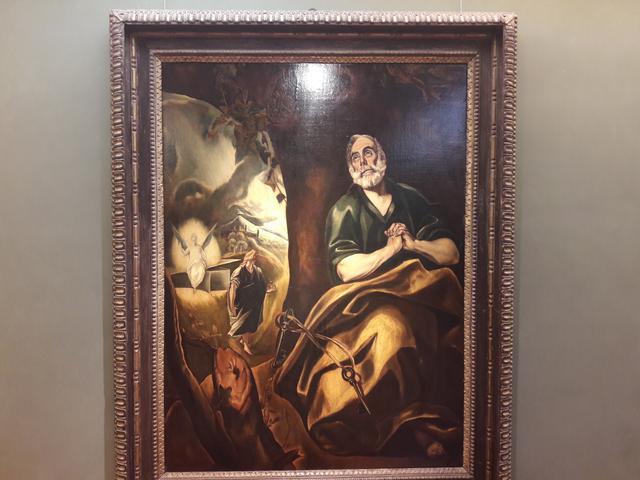Tears of Saint Peter

It is a painting that symbolizes betrayal, repentance and remorse. It tells the story of a disciple betraying his teacher and even more so, a friend betraying the deepest friends. For art appreciators, the Tears of Saint Peter is a symbol of all the elements of repentance, humility and remorse that define people as a whole.
Painted in 1585 by Domenikos Theotokopoulos, a Greek artist who would affectionately become known as "El Greco" (the Greek). He began his early career at the age of twenty-six when he moved to Venice and then Rome, where he would come to blend his own styles with those of the Venetian Renaissance and concepts of Mannerism. These ideals would come to show paintings that were asymmetrical and unnaturally elegant. Moving to the Spanish town of Toldeo in 1577, El Greco became famous for a variety of notable works including: The Expolio (1577-79), the burial of the Count of Orgaz (1586-88), the view of Toledo ( 1596-1600) and the opening of the fifth seal (1608-1614).
The painting is known as a defining image used by proponents of the Counter-Reformation movement to show the humanity of all saints, including that of Saint Peter. As a painting, El Greco created it for private viewings with the goal of creating a deep and personal bond between the follower and the image. The painting contains a number of characteristics that are defining and visible to viewers. The most important of these elements are the eyes, the windows to the soul. They express regret and deep sadness for their actions in denying and betraying Jesus during the passion.
It shows him appealing directly to God and heaven for his actions. It also displays a number of key symbols that reflect not only Peter's role before Jesus but his subsequent position as God's representative on earth. To this end, the image displays a number of key symbols and characteristics that help identify who Saint Peter was and how he is represented within the Christian religion. The first symbol in this regard is the keys that we use on its left side. They symbolize the keys of the Holy Sea and indeed the keys of the Kingdom of Heaven.
© Tourblink